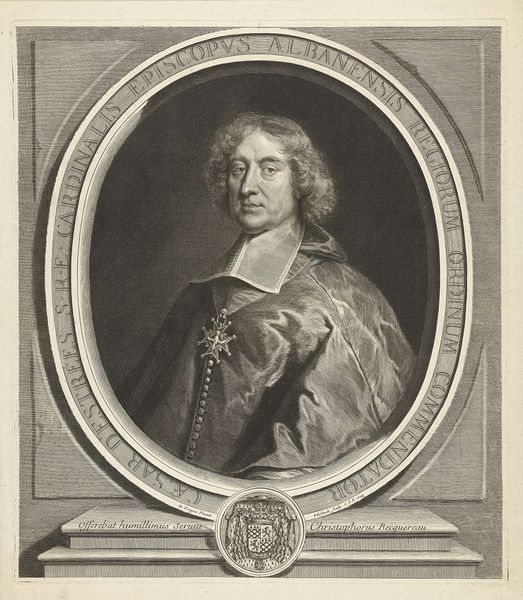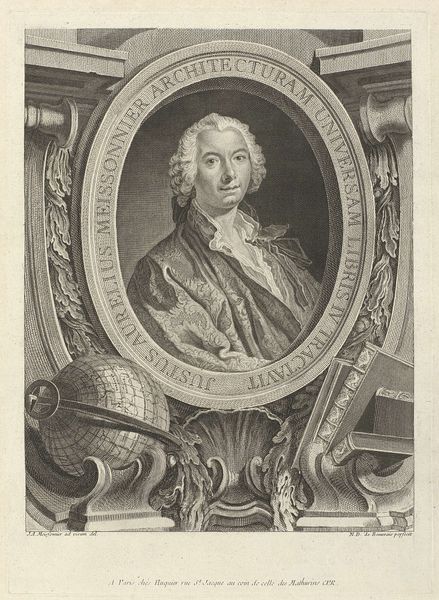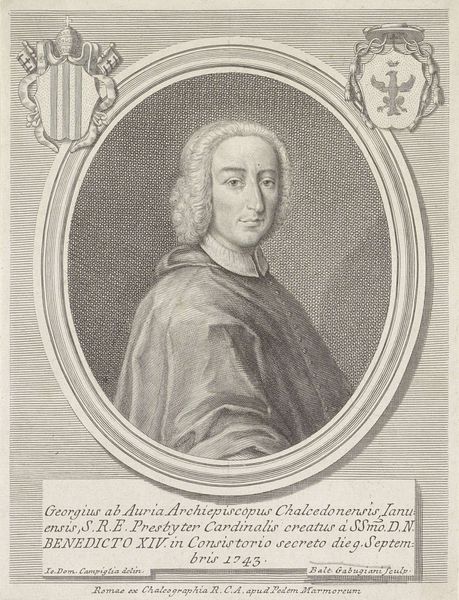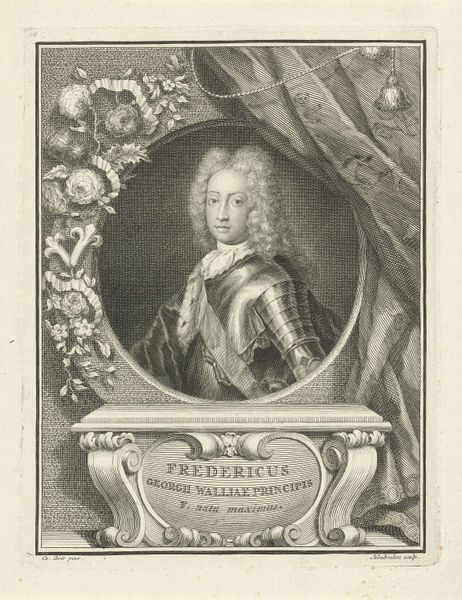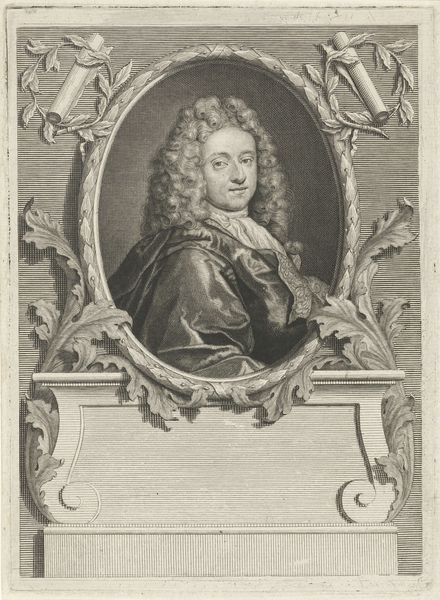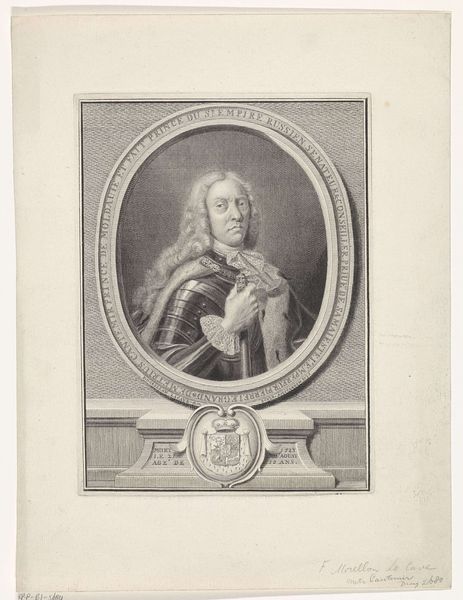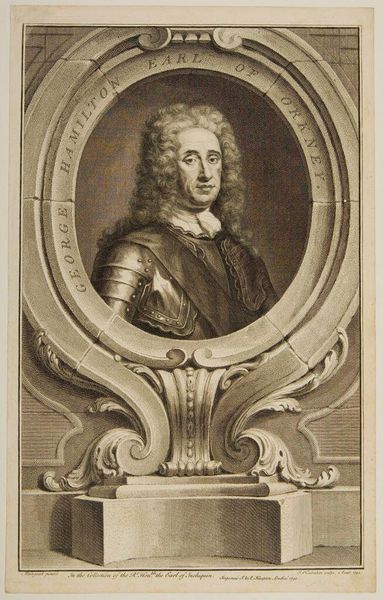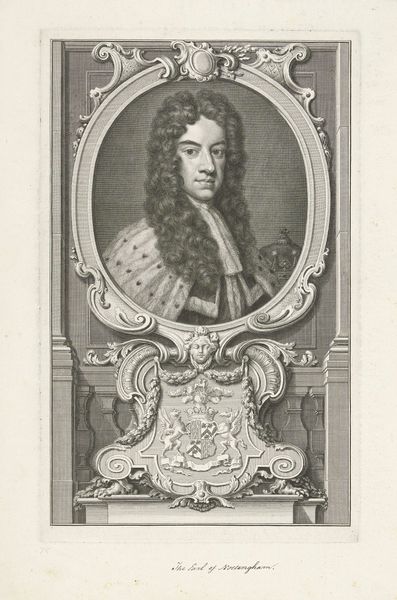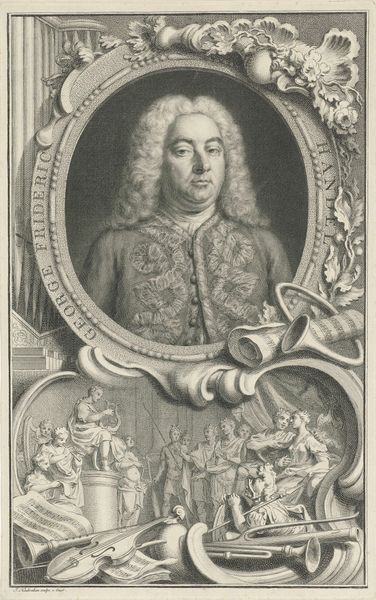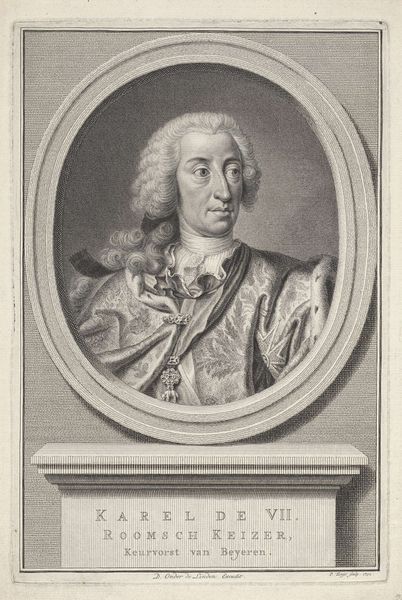
drawing, print, paper, engraving
#
portrait
#
drawing
# print
#
paper
#
france
#
history-painting
#
engraving
#
rococo
Dimensions: 114 × 72 mm (image); platemark not visible; 128 × 81 mm (sheet)
Copyright: Public Domain
This print of Voltaire was made by Etienne Ficquet in 1736, using a technique called etching. This involved coating a metal plate with wax, drawing the image with a needle to expose the metal, and then bathing the plate in acid. The incised lines would then hold ink, and the image could be printed. The material nature of the print, with its delicate lines and tonal variations, shapes our perception of Voltaire. Ficquet masterfully used the etching process to capture the textures of Voltaire’s wig and clothing. The act of etching itself—a laborious process of mark-making—adds a layer of significance. Every line represents time, skill, and intention. Consider the social context: prints like these were luxury items, yet they played a key role in disseminating images and ideas. By appreciating the making and materials, we recognize that this image of Voltaire wasn't just a portrait, but a carefully crafted artifact, one that collapses distinctions between art, craft, and social commentary.
Comments
No comments
Be the first to comment and join the conversation on the ultimate creative platform.

